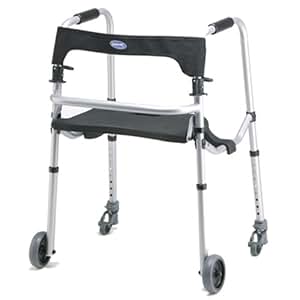Walkers are essential mobility aids for individuals who require support when walking. Among the various brands available, Invacare has established itself as a leading manufacturer of quality walkers. However, with a wide range of options, selecting the right Invacare walker can be overwhelming. This guide aims to simplify the decision-making process by providing insights into the types, features, and considerations to keep in mind when choosing the right Invacare walker.
Understanding the Different Types of Invacare Walkers
Invacare offers various types of walkers to cater to different needs. Understanding these types is crucial in making an informed choice.
- Standard Walkers: These are basic walkers that provide stability and support for users who can bear some weight but need assistance with balance.
- Rollators: Equipped with wheels, rollators are ideal for users who can walk but may tire easily. They often come with seats for resting.
- Four-Wheel Walkers: Similar to rollators, but designed for more active users. They provide better maneuverability and often include features like hand brakes and baskets.
- Specialty Walkers: Designed for specific needs, these may include walkers for pediatric use or those with unique features for individuals with disabilities.
Key Features to Consider

When selecting an Invacare walker, certain features can significantly enhance usability and comfort. Here are some important features to consider:
- Weight Capacity: Ensure the walker can support the user’s weight. Most Invacare walkers have a capacity ranging from 250 to 400 pounds.
- Height Adjustment: Look for a walker that can be adjusted to fit the user’s height for optimal posture and comfort.
- Wheels: For rollators and four-wheel walkers, consider the size and type of wheels. Larger wheels can handle uneven terrain better.
- Brakes: Reliable braking systems are crucial for safety. Check if the walker has hand brakes and if they are easy to operate.
- Storage Options: Some walkers come with baskets or bags for carrying personal items, which can be very convenient.
Assessing Your Needs

Choosing the right walker also involves assessing personal needs and preferences. Here are some questions to consider:
- What is the primary use? Will it be used indoors, outdoors, or both?
- What level of mobility does the user have? Can they bear weight, or do they need more support?
- Is there a need for additional features? For example, would a seat be beneficial for resting during walks?
- What is the user’s physical condition? Consider factors like balance issues, strength, and endurance.
Case Studies: Real-Life Experiences

Understanding the experiences of others can provide valuable insights. Here are a couple of case studies illustrating the importance of choosing the right walker:
Case Study 1: Mary’s Journey with Mobility
Mary, a 67-year-old woman with arthritis, found herself struggling with balance. After consulting her physician, she decided to try an Invacare rollator. The rollator’s seat allowed her to take breaks during her walks, which was crucial for managing her fatigue. Additionally, the adjustable height feature ensured that she maintained a comfortable posture. After a month of use, Mary reported improved confidence and mobility, allowing her to engage more actively in her community.
Case Study 2: John’s Active Lifestyle

John, a 72-year-old former athlete, wanted a walker that could keep up with his active lifestyle. He opted for a four-wheel Invacare walker. With its sturdy design and larger wheels, John was able to navigate both indoor and outdoor settings effectively. The built-in basket allowed him to carry his essentials, making it easier for him to maintain his independence. John’s choice of a walker not only supported his mobility but also encouraged him to continue his active pursuits.
Statistics on Walker Use

Understanding the prevalence of walker use can highlight the importance of mobility aids:
- According to the Centers for Disease Control and Prevention (CDC), approximately 1 in 4 adults aged 65 and older falls each year, emphasizing the need for mobility aids.
- A survey conducted by the National Institute on Aging revealed that nearly 50% of older adults have used a walking aid at some point in their lives.
- Research indicates that individuals using walkers experience a 30% reduction in fall risk, making it a crucial tool for maintaining safety and independence.
Trial and Error: Testing Walkers

Before making a final decision, it’s advisable to test the walker. Many medical supply stores allow potential users to trial different models. Here are some tips for testing:
- Walk with the Walker: Try walking with the walker on various surfaces to assess stability and comfort.
- Adjust the Height: Ensure the walker can be adjusted to your preferred height.
- Test the Brakes: Make sure the brakes are easy to operate and effective in preventing the walker from rolling away.
- Check for Portability: If transportation is a concern, check how easy it is to fold and carry the walker.
Choosing the right Invacare walker is a crucial step toward enhancing mobility, safety, and overall quality of life. By understanding the different types of walkers, key features, and individual needs, users can make informed decisions that best suit their lifestyle. Real-life case studies highlight that the right walker can significantly improve confidence and independence. With careful consideration and testing, finding the perfect Invacare walker can lead to a more active and fulfilling life. Always consult with healthcare professionals when making decisions about mobility aids to ensure the best fit for your specific needs.